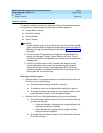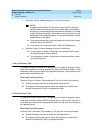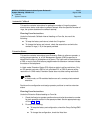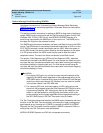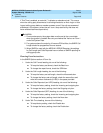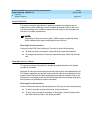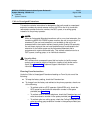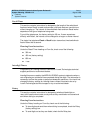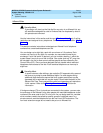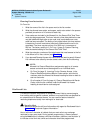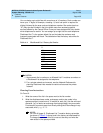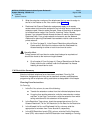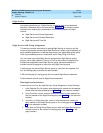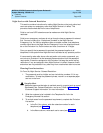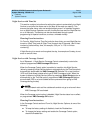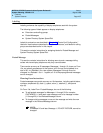
MERLIN LEGENDCommunications System Release 6.1
System Planning
555-661-112
Issue 1
August 1998
Features
Page 4-50System Features
4
Allowed Lists 4
!
SecurityAlert:
If you assign a 0 (zero) as the first digit for any entry in an Allowed List, any
toll restrictions assigned for calls to numbers that can be placed by local or
toll operators are removed.
Use the instructions in this section and the next (“Disallowed Lists”) only if calling
restrictions are assigned to any telephones. Otherwise, skip to the section, “Night
Service.”
This section contains instructions to designate an Allowed List of telephone
numbers that a restricted telephone can dial.
You can design up to eight lists, each with a maximum of 10 numbers. Each
number can have up to six digits, for example, an area code followed by an
exchange. If a toll-call prefix is required, you can include a leading 1, which the
system doesn’t count as one of the six digits. Star codes (such as *67) may also
be included in the list to allow users to access special services offered by the
Central Office (CO). Once you have designed the lists, decide which restricted
telephones have access to the lists. Each restricted telephone can have up to
eight lists.
!
SecurityAlert:
In some instances, after dialing a star code the CO responds with a second
dial tone as a prompt to enter additional digits. If a caller begins dialing
additional digits before the second dial tone, system restrictions may be
bypassed and a restricted call may be routed. Careful administration of the
Second Dial Tone Timer prevents the caller from bypassing call restrictions
in this manner. Refer to the Planning Form Instructions that follow for
information.
If foreign exchange (FX) or tie trunks are connected to the system, you can enter
the exchange in the Allowed List to allow people with restricted telephones to dial
numbers to the area code for the FX or tie trunk. As you design each list, consider
which numbers need to be called by specific groups of restricted users. In a
private network, restricted telephones can dial non-local UDP extensions. The
non-local extension ranges do not need to be put on an Allowed List.



